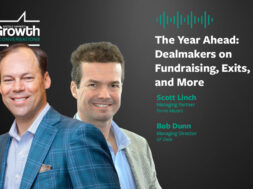The Corporate Carve-out Option
Configure Partners' K.T. Taratus discusses risks and key considerations of a carve-out transaction

Divesting non-core assets can accomplish several objectives for both the buyer and the seller. For the seller, sale proceeds can be used to reduce debt, finance accretive capital projects, fund a distribution to an ownership group or be earmarked for future acquisitions more aligned with core competencies. For the buyer, the purchase represents the opportunity to deploy capital at an attractive valuation.
The catch? Carve-outs can carry relatively higher execution risk than a typical platform acquisition. While every transaction is different, numerous “headline” concepts germane to both buyer and lender must be considered when pursuing a corporate carve-out. And, due diligence provided by third-party service providers would be highly encouraged.
What Are the Unforeseen Costs/Complexities of the Carve-out?
Unforeseen costs can come in many shapes and sizes. While costs are typically allocated to a subsidiary to present stand-alone profitability, it is crucial to determine if the asset is benefiting from a “family plan” for items such as insurance, IT and utility costs. Will those costs increase for the stand-alone entity? Is the parent’s creditworthiness driving down costs elsewhere within the stand-alone P&L? Are input costs benefitting from any order size discounts that will disappear as a stand-alone entity?
Often, facilities are shared between a subsidiary and the corporate parent. What is the cost of relocation, if desired? Are facility employees also shared, and is the parent appropriately burdening the stand-alone entity with capital expenditures? What employees are a part of the carve-out, and what new or existing positions need to be filled post-close? In terms of the management team, will the top levels of the organizational chart be included in the transaction, or will new members need to be recruited and hired?
More generally, how long will the parent need to support the stand-alone entity post-close for procurement, billing and other ERP-related activities? The transition services agreement between the subsidiary and parent typically answers these questions. There is inevitably a degree of turbulence when separating a long-time subsidiary from a parent, so a comprehensive transition services agreement is an imperative component to minimizing the bumps.
All the wrinkles listed above can be underwritten, but the aperture of third-party diligence report scopes (e.g., insurance diligence, operational reports, quality of earnings, etc.) should be widened to answer questions like these to avoid post-close surprises.
What Will Customers Think of the Carve-out?
Customers are inherently an important part of the underwriting process. Anticipating how they will react and determining who “owns” the relationship is critical. Is the customer loyal to the product and/or service provided by the subsidiary, or will the customer seek a substitution elsewhere if loyal to a manager remaining with the corporate parent? If the offering is highly specialized, then this risk is likely diminished. Does the corporate parent provide any products and/or services that could be viewed as competitive, and if so, will this generate any post-close revenue degradation? Will the stand-alone entity be able to maintain current pricing?
A market study complete with a voice-of-the-customer exercise is highly recommended to assess these risks. Through this diligence stream, a buyer (and the buyer’s lender) can take the temperature of current customers and assess how entrenched the relationships are and the existence of any substitution risk.
Recent Case Studies
In line with recent industry trends, Configure’s carve-out-related advisory activity has been active in terms of both pipeline and completed assignments. Each deal has unique underwriting wrinkles, but the most beneficial marketing strategy when assisting a sponsor with a carve-out financing is to preempt questions related to the perceived key areas of underwriting focus (e.g., stand-alone costs, customer relationships, etc.) to accelerate the evaluation of the opportunity.
Examples of recent carve-out transactions include:
In March 2024, Kingswood Capital Management acquired Progress Lighting, a leading provider of decorative lighting fixtures and ceiling fans for residential and commercial lighting markets in North America, from its corporate parent, Hubbell Incorporated. Configure served as the sole lead arranger for credit facilities.
About seven months later, Kingswood Capital acquired Kichler Lighting, a leading provider of indoor and outdoor decorative lighting fixtures for residential and commercial markets in North America, from its corporate parent, Masco Corporation. Configure served as sole lead arranger for credit facilities.
In November 2024, Hidden Harbor Capital Partners acquired Norplex-Micarta, a leading producer of high-performance thermoset composite materials, from Industrial Dielectrics Holdings, Inc. Configure served as financing advisor to Hidden Harbor in securing committed debt capital.
K.T. Taratus is Vice President of Configure Partners.
Middle Market Growth is produced by the Association for Corporate Growth. To learn more about the organization and how to become a member, visit www.acg.org.


